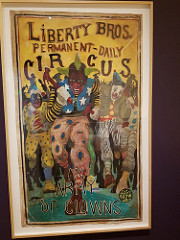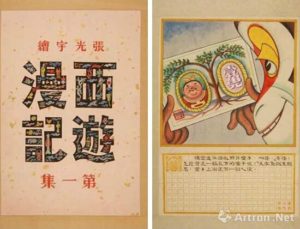At Planet Comicon in Kansas City last month, I came across a gentleman selling a comic book series based on the Hideyoshi invasions of Korea, known in Korea as the Imjin War, focused on the escapades of the national hero Admiral Yi Sunshin. Naturally, I was curious, and asked how historically accurate they were: “very,” I was told, though a bit of liberty had been taken with a few characters for the purposes of dramatization. A quick perusal suggested a lot of fighting, but it was a war comic after all, so I got the whole extant set, two volumes of a planned three-volume story1 ; this means that this is a review, of sorts, of a work in progress.
This is a terrible historical comic. It’s possible to do interesting and dramatic historical stories as comic books, and it’s possible to do historically sound stories as comic books, and it’s even possible to do interesting and dramatic and historically sound stories as comic books. This is none of the above. This isn’t even a good comic book, at least not compared to the sorts of things I consider good comic books. The chronology is more or less accurate, as near as I can tell without doing a lot more background work, but that’s damning with faint praise.2
In an interview with the Korea Times, Kompan said
“All we have is historical documents, journals, and fragments of weaponry and clothing. That being said, we don’t have a complete disregard of what actually happened. It is not our intent to be historically inaccurate but our objective is to bring Yi into the spotlight,” Kompan said. “We aim to give everyone around the world a fresh and new take on admiral Yi’s story.”
The team takes liberties to tell the story interestingly, but they also do their best to ensure that dates, battles and major events are historically accurate.
“Another important thing to note is that the integrity of admiral Yi is what drives this story. He is an incorruptible force that must overcome all the odds set against him. That’s not something that you can fictionalize. That’s what happened. That’s who he was. That is reality.”
The creative team has been stable except for the artist: Lead author, and convention seller Onrie Kompan is joined by DAK (David Anthony Kraft) as co-writer and editor, Adriana de los Santos as colorist, and Joel Saavedra as letterer; Giovanni Timpano did the art for the first volume, El Arnakleus did the art for the second, and they are looking for an artist for the third volume. Timpano was from Italy, de los Santos and Saavedra from Argentina, and El Arnakleus is “An artist from the Far East, who came to America to follow his dream.” I’ve never heard of any of these people before, but they claim to have extensive experience in the comic book industry, and they got Stan Lee to write a glowing foreword for the first volume. They also claim to have gotten a lot of help from Korean sources, including the Navy and the “Research Institute of Yi Soon Shin at Soonchungyang University.”3
Searching for that misspelled resource led me to this lovely graduate student historiography of Yi Sun-shin by Lee Seung Ho Historiography of Yi Sun Sin and Artificial Embodiment Within 2010. It’s a pretty damning indictment of the comic books, even if it doesn’t know it. It points out that even Yi’s own journals show his character to be … pretty normal for an elite professional. It points out that the mythologies around Yi are both relatively recent, and fading fast in Korean literature and history. Unfortunately, the heroic attitude towards Yi is one of the least terrible aspects of this book: if that were the worst thing about it, I could at least credit it with providing “a Korean perspective” comparable to the Chinese and Japanese perspectives I’ve read (though both of those were academic presentations that took Koreans and sources reasonably seriously).
What Kompan, et al., have done is considerably worse than usual for historical drama: vulgar, incoherent, lurid, inaccurate, poorly executed, and, ultimately, boring. Women characters exist mostly to show off implausibly proportioned body parts4 , and to give the male characters motivations for conflict or a pallette on which to demonstrate their depravity. The pivotal figure in the story is “Baron Seo,” a treacherous slaver, abuser of women, two-faced spy, and generally disgusting character; loosely (almost libelously) based on the So family of Tsushima. Japanese warriors are predictably tedious, honor-obsessed, vicious, and effective.5 There’s a great deal of sexual deviancy in this comic: samurai homosexuality is portrayed as shameful and abusive; sexual abuse of slaves and captives is routine; pedophilia and pederasty are attributed to particularly evil characters, who get to carry it out with some frequency.6 The violence is accompanied by massive blood-sprays and, of course, the severity of the wound depends entirely on the needs of the plot, which reads like a kind of sado-masochstic soap opera.7 The bombastic warrior-speak is leavened with vulgar colloquialisms, all in English except for ninjas (whose untranslated Japanese appears to be machine-generated) and scattered technical terms: ashigaru and “BANGPOHARA!” (which appears to be the Korean for “Fire!”) are the most frequent unexplained vocabulary. As with the research institute, names are often sloppily rendered for no apparent reason. Some of the art in the second volume appears to be based on posterized photographs or models, which is distracting and unsubtle. And in at least one case, the writer and letterer appear to have had an epic breakdown of communication.
Hideyoshi’s execution of Sen no Rikyu is portrayed as a result of the tea master’s defiant doubt that the invasion would go well, and his prediction haunts the authentically angry, but ahistorically handsome and trim Hideyoshi in his appearances. This gets us into the historical questions raised by this drama, which are mostly of the “sins of omission” sort, and really too numerous to detail. Granted, this is focused on Yi Sun-shin, but that doesn’t justify skipping over five years in the middle of the war as though it were a lost weekend. Nor does it explain what was really going on in the land war, how the Chinese were involved (they are “just as bad as the Japanese” as far as the people are concerned), or even what the real strategies and issues were at sea, including some grossly oversimplified and mythical elements that turn Yi from a tactical and organizational genius into a kind of simplistic trickster. And we won’t even start with the imaginative weapons (samurai with battle axes!), armor, etc, and the fact that these characters spend a lot of time staring at reflective blades and seeing things in them that aren’t there.
As I said, it’s bad history. It postulates Yi as a national hero during the war, one whose popularity threatens the King’s position (who cites the frequency with which generals supplanted monarchs in the Choson dynasty, which I don’t remember being an issue), rather than being merely a good leader to his troops. While it highlights the pain and suffering of the Korean people during the war (well, during the interesting naval bits, anyway), it distills that experience down to sexual degradation (slaughter and other forms of slavery are mentioned, but not depicted, and forage/taxation burdens are implied). The intrigues and conflicts within and between Korea, Japan, and China, are turned into psychosexual dramas rather than politics, and the warfare, which should be the best part, is splashy and simplified and loud. It’s a pretty bad comic book, too, unless you like that particular sort of thing.
technically, only the first volume is available, plus the four issues of the 2nd volume, which has yet to be published as a single volume. Also, since I bought them from the writer, I got them all signed! I do love comicons. ↩
I’ve read a Chinese-oriented history of the war and a Japanese-oriented history of the war, but I don’t have either of those books at hand. Wikipedia, however, has a much more historically sophisticated take on these battles than this comic book. ↩
also known as the Yi Sun-shin Research Institute at Soonchunhyang University. ↩
this is a job requirement for whatever artist applies to work the third volume ↩
except for the ninja, who don’t succeed in killing anyone, I don’t think. The surprised look in their eyes when they get beheaded was intended to be funny, which tells you a great deal about the level of maturity at work here. ↩
Normally, I’d shelve this with my other historical manga and comics, in my office, but it’s so obviously inappropriate for a workplace or educational setting that I will have to refrain. ↩
Cinematically, this would be a Quentin Tarantino History Channel production ↩


























